Last Chance to Catch NYC's Holiday Notalgia Train
We met the voices of the NYC subway on our nostalgia ride this weekend!


Though the suburban streets that run through the village of Watkins Glen are quiet now, they were once lined with crowds of cheering spectators and filled with the roar of race car engines. This town in the Finger Lakes region of New York was home to the annual Watkins Glen Grand Prix Festival every September from 1948 through 1952. The annual road race is credited with reviving the sport of road racing in America after World War II. Drivers didn’t just do laps around a track, like the one you will find at the Watkins Glen International racing venue today, instead, the course ran through the regular village streets. You can drive the same route today, over railroad crossings, past homes and down the main street.
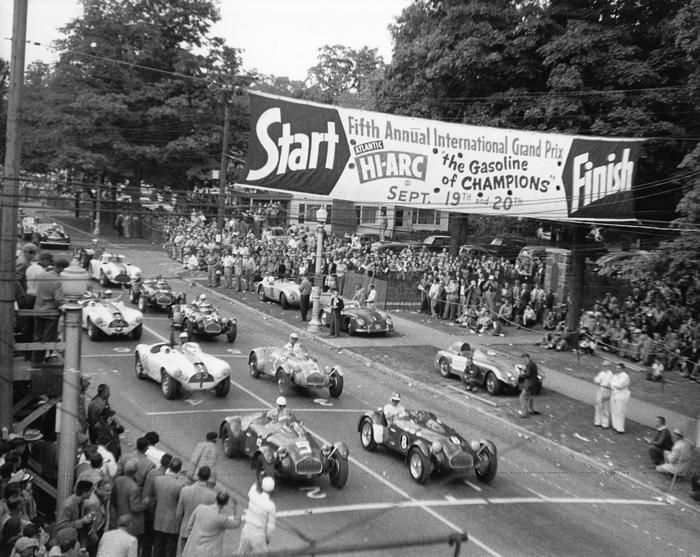 All historical images and photographs courtesy of the International Motor Racing Research Center
All historical images and photographs courtesy of the International Motor Racing Research Center
The original 6.6-mile Watkins Glen Grand Prix circuit was conceived by law student and car enthusiast Cameron R. Argetsinger. He pitched the idea to the village Chamber of Commerce and then to the Sports Car Club of America and both institutions enthusiastically approved his plan. Argetsinger’s course started in front of the Schuyler County Courthouse on Franklin Street, the village’s main drag, and wound its way up-hill, over and under the New York Central Railroad tracks, and past village landmarks including a school-house and a stone bridge. Permits need to be obtained from six different government entities to close all of the streets and trains had to be stopped for races.
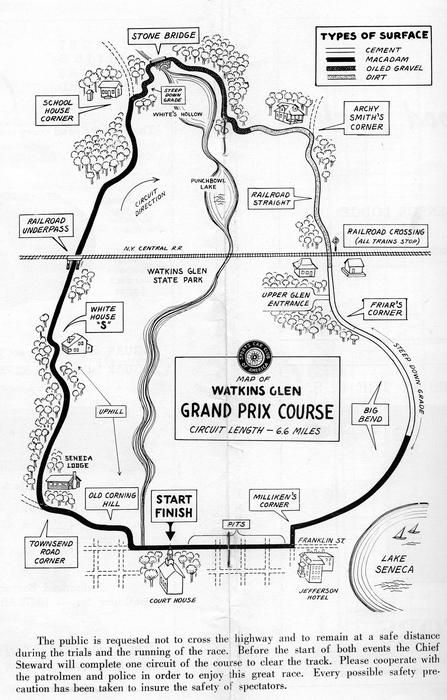
Courtesy of the International Motor Racing Research Center
A whimsical map of the race circuit and its landmarks was drawn by New Yorker cartoonist Sam Cobean. Cobean drew for the New Yorker in the 1940s and 1950s and spent the latter part of his life in Watkins Glen. Once drivers hit the Big Bend, reaching maximum speeds at they started to descend the hill and head towards town again, they were treated to stunning views of Lake Seneca.
Road racing was very dangerous for drivers and spectators alike. Tragedy came to the circuit during the second lap of the annual race in 1952. Driver Fred Wacker attempted to pass second-place John Fitch on the approach to the first turn. This area on Franklin Street was designated as a no-passing and no spectator zone, but due to an extremely large crowd that year police couldn’t keep the area clear. As Wacker in his Cadillac-Allard attempted the pass he veered into the crowd, injuring twelve spectators and killing a seven-year-old boy. The race in progress was stopped and the Watkins Glen Grand Prix circuit was never to be raced through downtown streets again.
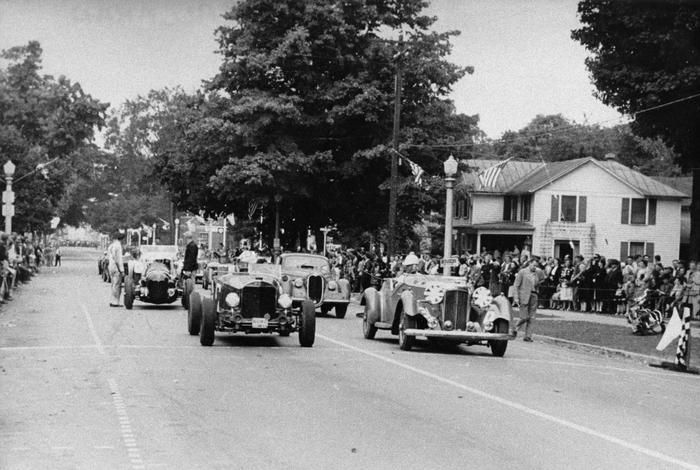
Start of the 1948 Main race; 15 cars start the 8 lap race; #9 Briggs S. Cunningham (Bu-Merc), #30 E. Mike Vaughn (Lagonda), #31 George B. Weaver (Maserati RI), #35 Frank Griswold Jr. (2900B Alfa Romeo); photo by Charles Lytle Jr. courtesy of the International Motor Racing Research Center
Road racing wasn’t outlawed altogether after the incident, but New York State withheld the issuance of permits for racing on state roads. Since 85% of the Watkins Gen circuit was made up of state roads, a safer alternative needed to be found. The Grand Prix was eventually moved to the Town of Dix on a 4.6-mile circuit called the “Jane Delano Circuit.” No spectators were not allowed within 30 feet of the track and along the route trees, fences, utility poles, and other obstacles were relocated.
Argetsinger would go on to graduate from Cornell Law School and practice law for forty-eight years while also becoming a major figure in motorsports. He brought full international races to Watkins Glen in 1958 and throughout his life served as the director of the Formula One United States Grand Prix, executive director of the Sports Car Club of America, and commissioner for the International Motor Sports Association.
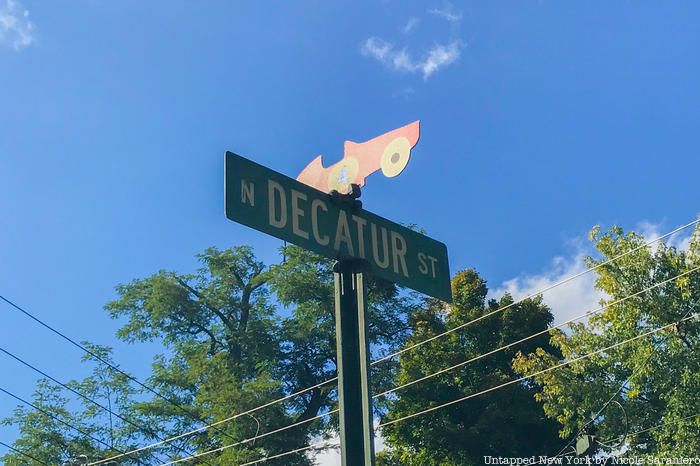
There are little signs all around town that clue you in as to its racing history. Cute vintage race-car signs mark the numbered streets that run perpendicular to Decatur Street, from 2nd Street to 15th Street, a block over from where the original circuit started and ended on Franklin Street. On Franklin Street is where you will find a stone marker that commemorates the start and finish line of the first Watkins Glen Grand Prix on October 2, 1948, the first road race to take place in America after World War II.
A Watkins Glen Drivers Walk of Fame stretches along the sidewalk in front of The International Motor Racing Research Center on Decatur St. (temporarily closed at the time of this publication due to Covid-19). The walk honors retired drivers who have driven a race car in competition at one of the four racecourses used at the Glen since 1948. Each September the Watkins Glen Historic Racing Committee adds from three to six new drivers at the annual Grand Prix Festival.
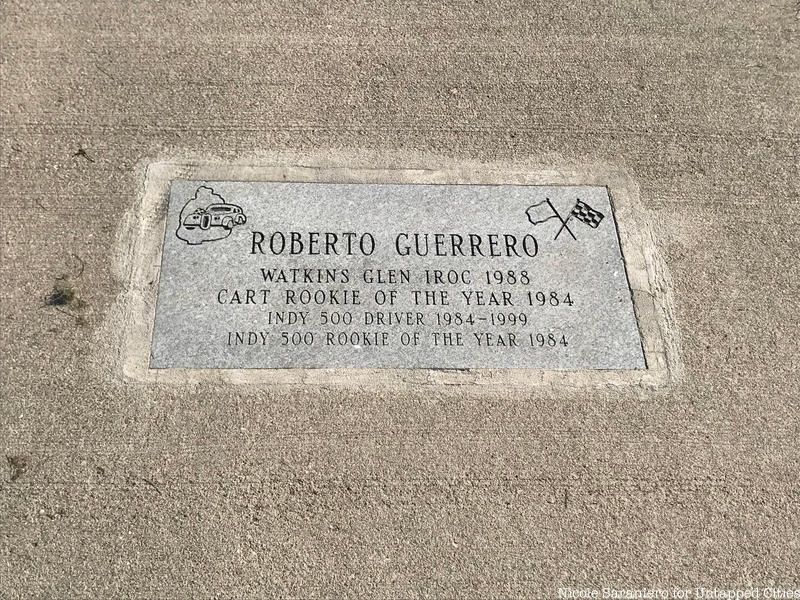
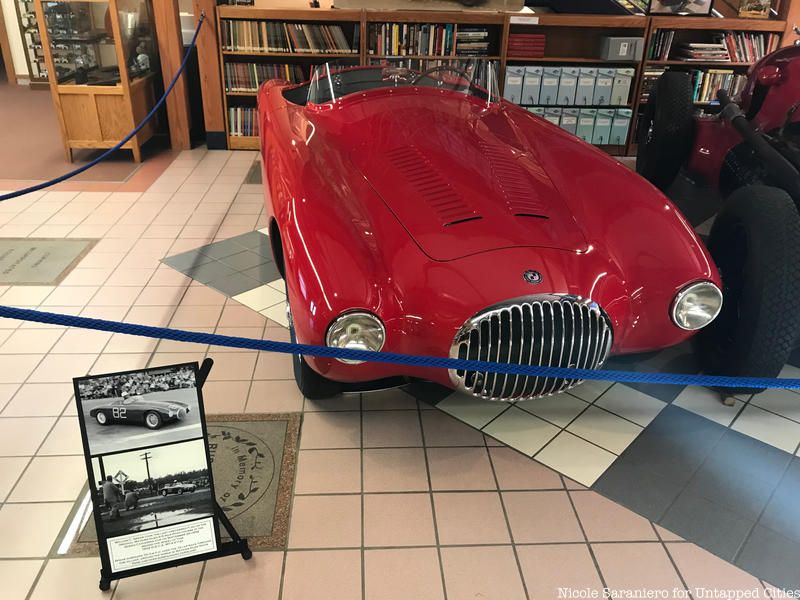
Inside the International Motor Racing Research Center
The annual Gand Prix Festival celebrates the racing history of the town and brings classic racing cars back to its streets. This year’s festival, originally scheduled for September 11, 2020, has unfortunately been canceled due to the coronavirus. While the International Motor Racing Research Center is closed, its staff is hard at work putting on shows in local venues throughout the area. Right now you can find exhibits on women in motorsports at the Watkins Glen Chamber of Commerce Visitor’s Center and a photography show at the Arnot Art Museum in Elmira that features motorsport photos captured by photographer Kathie J. Meredith.
The 1948 circuit was listed on the National Register of Historic Places in 2002. Racing enthusiasts, and anyone who wants to, can still drive the village street course, though at much slower speeds!
Next, check out Inside Buzz-a-Rama, the Last Slot Car Raceway in New York City and Photos Behind the Scenes at the Formula E ePrix, First International Motor Race in NYC
Subscribe to our newsletter